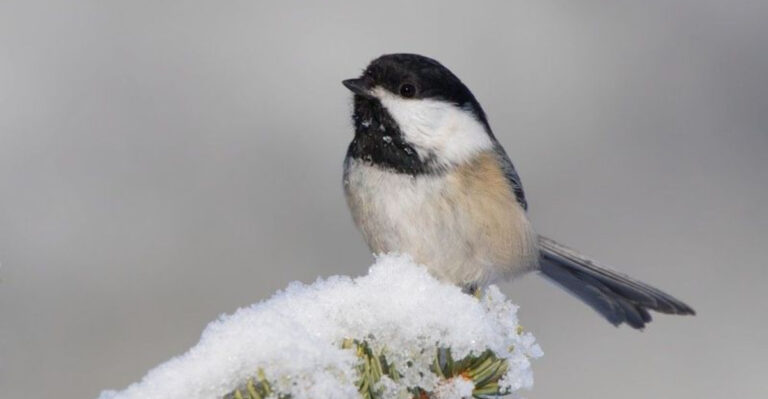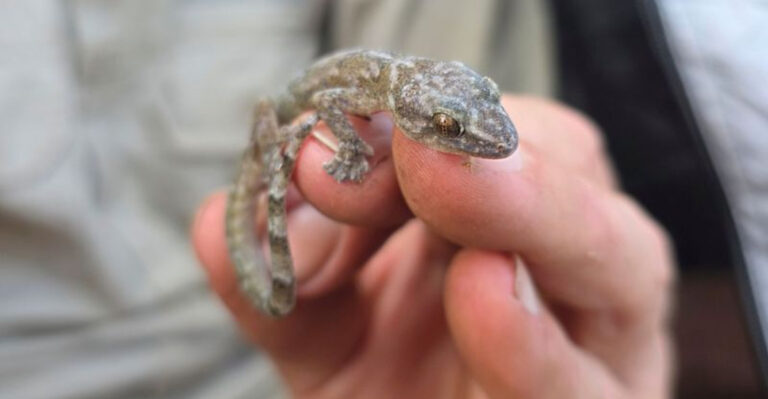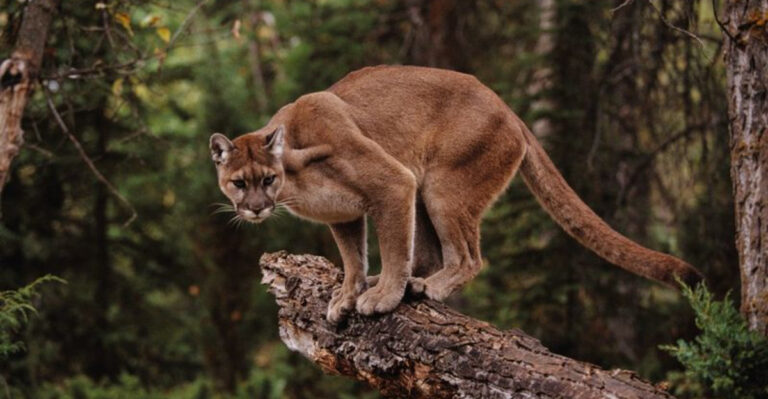7 Cats That Don’t Live That Long (And 7 That Live For Decades)

Ever wondered why some kitties leave us too soon while others seem to stick around forever? The lifespan of our feline friends varies dramatically depending on their breed, genetics, and care.
Some cat breeds are known for their heartbreakingly short lives, while others might outlive your mortgage.
1. Manx – Short-Lived Sweethearts
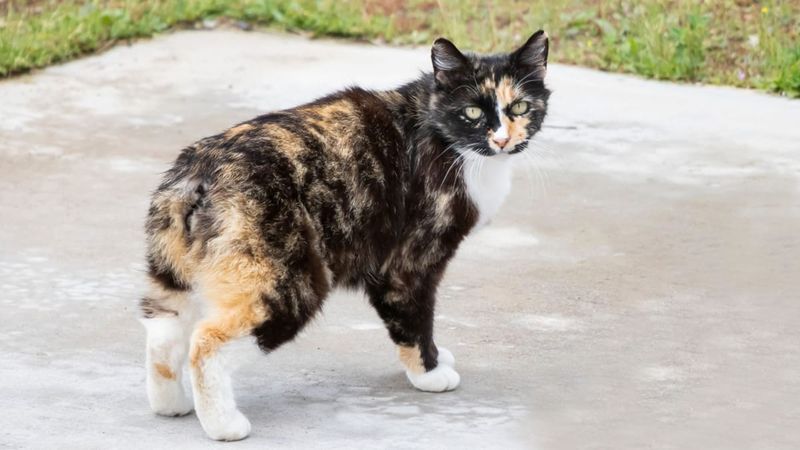
Manx cats, famous for their missing tails, typically live between 8-14 years. Their shortened lifespan often results from genetic issues related to the same mutation that causes their taillessness.
These adorable felines can suffer from “Manx Syndrome,” affecting their spine and bowels. Despite these challenges, they’re known for their dog-like loyalty and playful hunting instincts.
2. Scottish Fold – Adorable But Brief

Those iconic folded ears come with a price. Scottish Folds generally live 11-14 years, significantly shorter than many other breeds. Their trademark ear cartilage mutation unfortunately causes painful joint problems called osteochondrodysplasia.
These sweet-faced companions often develop arthritis early in life. Their charming appearance masks serious health concerns that can limit both their mobility and years with you.
3. Sphynx – Naked And Vulnerable

Hairless wonders with wrinkled skin, Sphynx cats typically live 8-14 years. Their lack of protective fur makes them susceptible to skin conditions, sunburn, and temperature sensitivity.
Heart problems plague this breed, with hypertrophic cardiomyopathy being particularly common. Though incredibly affectionate and warm (literally!), their genetic health issues often cut short their time as your heat-seeking cuddle companion.
4. Bengal – Wild Beauty, Brief Time
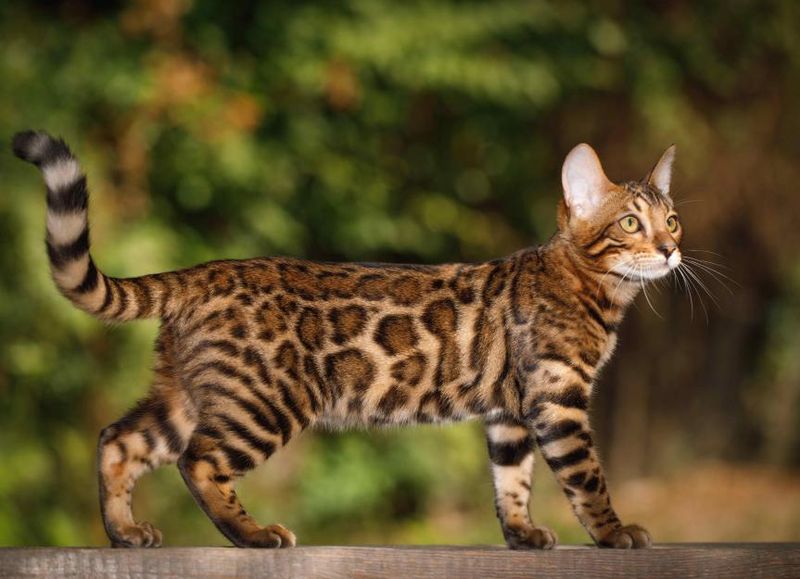
Looking like miniature leopards, Bengals typically live 12-16 years, shorter than many domestic cats. Their exotic appearance comes from Asian leopard cat ancestry, which unfortunately brings susceptibility to several genetic conditions.
Bengals commonly face heart disease and progressive retinal atrophy. Their wild energy and striking spotted coats make them unforgettable companions, even if their time with you might be briefer than you’d hope.
5. Munchkin – Short Legs, Short Lives

Those adorable stubby legs come with serious health concerns. Munchkins typically live 12-14 years, with their characteristic short limbs resulting from a genetic mutation that affects cartilage development throughout their bodies.
Spinal issues and osteoarthritis frequently plague these cats. While their perpetual kitten-like appearance melts hearts, the same gene that gives them their distinctive look can unfortunately limit their mobility and lifespan.
6. Exotic Shorthair – Flat-Faced Fragility
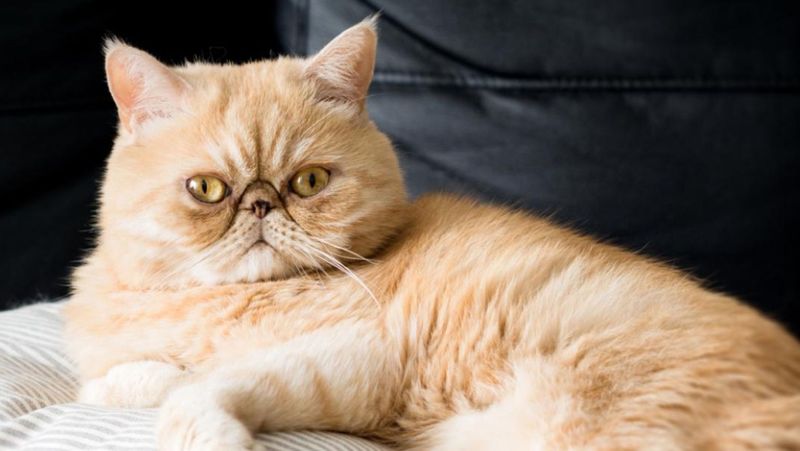
With their squished faces and plush coats, Exotic Shorthairs typically live 8-15 years. Their brachycephalic (flat-faced) structure leads to breathing difficulties, eye problems, and dental issues throughout their lives.
These teddy bear-like cats often struggle with overheating and respiratory infections. Though incredibly sweet-natured and low-maintenance in grooming, their compressed facial structure creates health challenges that can shorten their time as your loyal lap warmer.
7. Abyssinian – Active But Brief
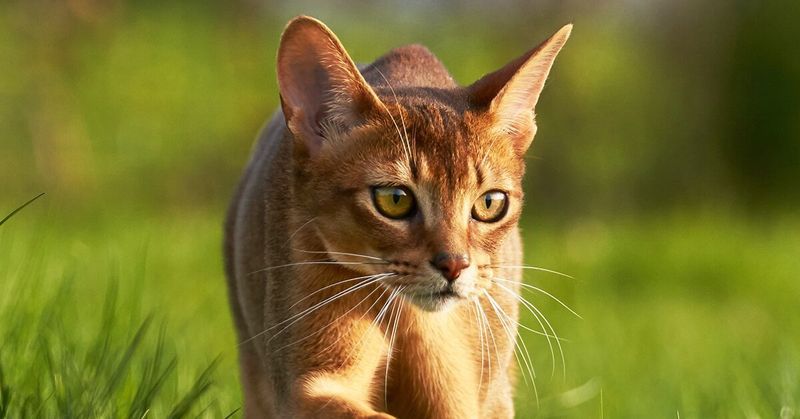
Abyssinians pack a lot of living into their 9-15 years. These energetic, ticked-coat beauties unfortunately face several genetic health issues including progressive retinal atrophy that can lead to blindness.
Renal amyloidosis, a kidney disease, frequently affects this ancient breed. Their playful, almost dog-like personality and striking ticked coat pattern make them beloved companions, even if their vibrant lives often end sooner than many other breeds.
8. Siamese – Vocal Longevity Champions

Famous for their loud opinions on everything, Siamese cats typically live 15-20 years, with some reaching their mid-20s! Their slender bodies and distinctive color points come with remarkable genetic hardiness.
These intelligent cats form deep bonds with their humans. While they can develop breed-specific issues like progressive retinal atrophy, their overall robust health and indoor-focused lifestyle contribute to their impressive longevity.
9. American Shorthair – Sturdy Centenarians
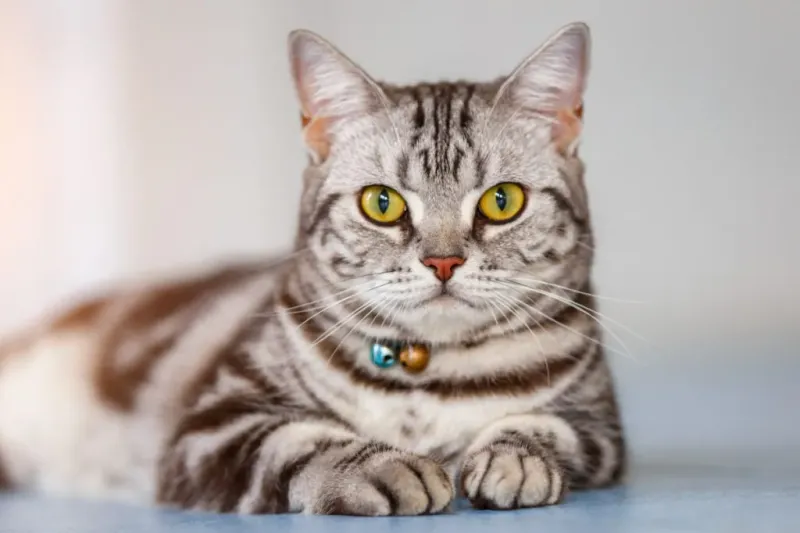
Originally brought to America as working cats on ships, American Shorthairs regularly live 15-20 years. Some exceptional individuals have reached 30! Their genetic diversity from centuries as working cats gives them remarkable health.
These medium-sized, muscular felines rarely develop the genetic conditions that plague purebreds. Their low-maintenance coats and easygoing personalities make them perfect family cats that might be with you from kindergarten through college graduation.
10. Burmese – Compact Longevity

These golden-eyed beauties often live 16-18 years, with many reaching their 20s. Burmese cats pack a surprising amount of weight into their compact frames, feeling much heavier than they look.
Their silky coats require minimal grooming, and they generally enjoy excellent health. Known for their dog-like devotion and playful nature even in old age, these social butterflies will happily spend two decades following you from room to room.
11. Savannah – Wild Hybrid Stamina
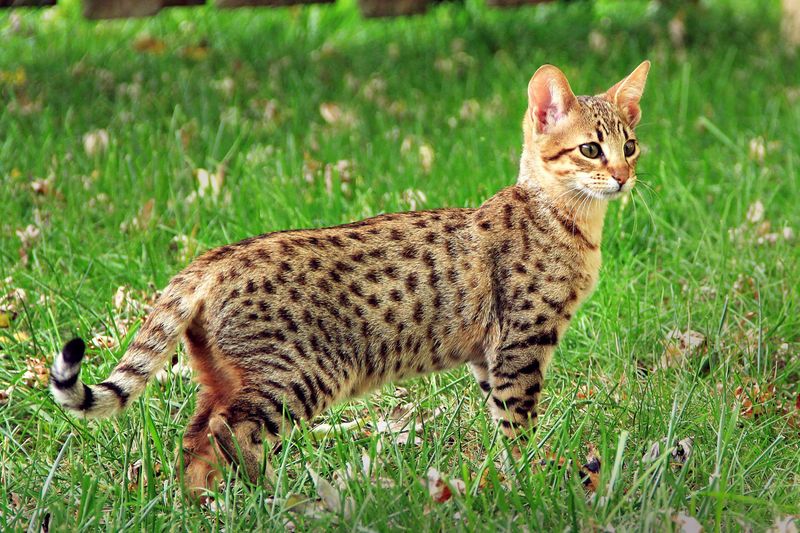
These exotic-looking cats result from crossing servals with domestic cats and typically live 17-20 years. Their wild heritage seems to grant them exceptional stamina and health, especially in later generations.
Standing tall on long legs with distinctive spotted coats, Savannahs maintain kitten-like energy well into their teens. Their remarkable jumping ability and intelligence keep them youthful, while their hybrid vigor gives them resistance to many common feline health issues.
12. Ragdoll – Floppy Longevity
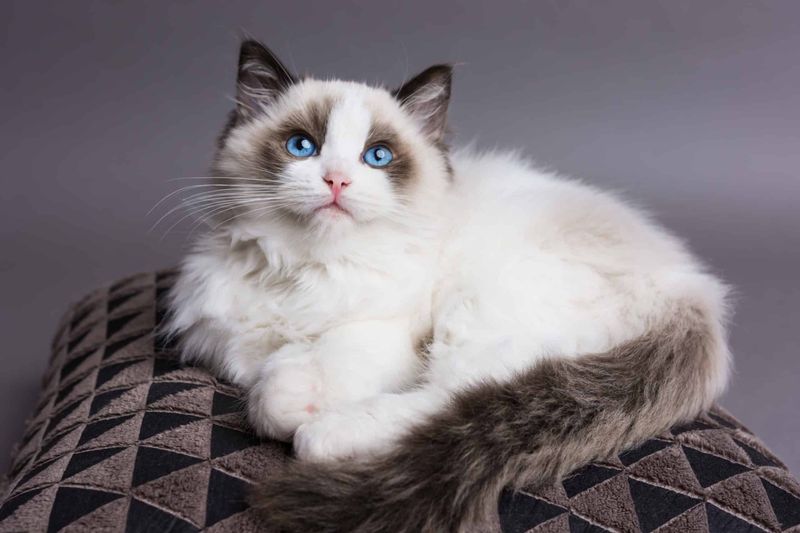
Named for their tendency to go limp when held, Ragdolls frequently live 15-25 years. These gentle giants develop slowly, not reaching full size until age four, and seem to age gracefully as well.
Their placid temperament reduces stress-related illnesses. While they can develop hypertrophic cardiomyopathy, careful breeding has reduced this risk. Their striking blue eyes and color-point patterns remain beautiful throughout their long lives as your docile, devoted companion.
13. Balinese – Long-Haired Longevity
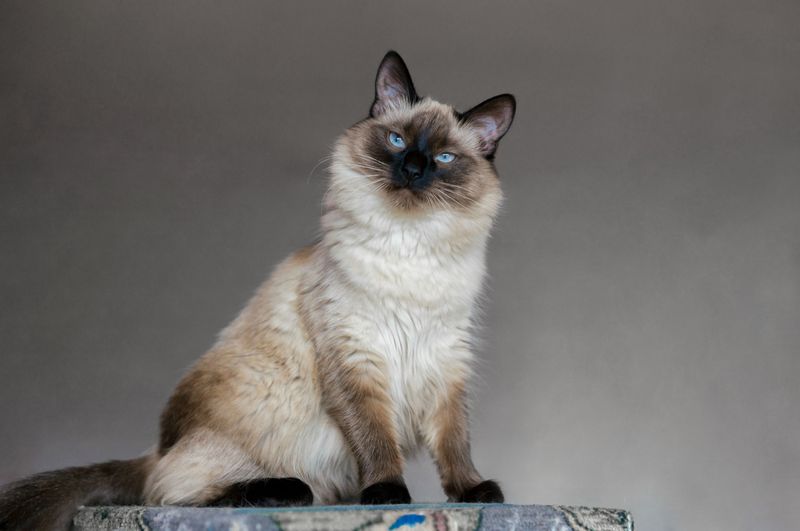
Essentially long-haired Siamese, Balinese cats regularly live 18-22 years. Their silky, single-layer coats require surprisingly little maintenance despite their luxurious appearance.
These vocal, intelligent cats benefit from hybrid vigor that gives them resistance to many genetic issues. Known for their acrobatic abilities and social nature, Balinese cats remain playful and engaged well into their senior years, giving you decades of affectionate companionship.
14. European Shorthair – Continental Survivors
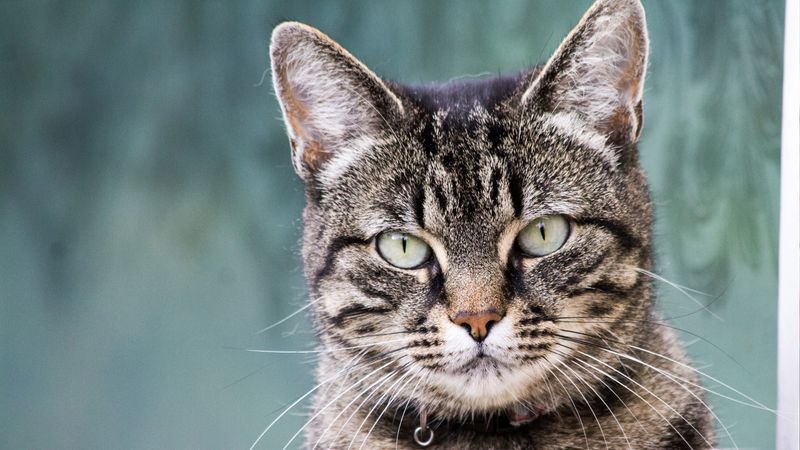
Common throughout Europe, these ordinary-looking cats have extraordinary lifespans of 15-22 years. Their genetic diversity from centuries of natural breeding gives them remarkable resistance to hereditary diseases.
These medium-sized, muscular cats adapt well to various environments. Often confused with random-bred cats, their unremarkable appearance hides their remarkable constitution. Their balanced temperament and excellent health make them lifelong companions that rarely require veterinary intervention.

